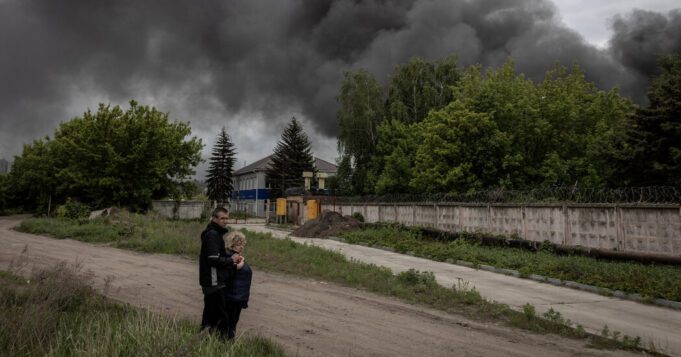The decision came after weeks of intense behind-the-scenes negotiations with Ukraine and took on new urgency after Russia launched a massive offensive on Kharkiv beginning around May 10.
Three days later, on May 13, Sullivan, Austin and Gen. Charles Q. Brown, the chairman of the Joint Chiefs of Staff, held a regularly scheduled secure videoconference with their Ukrainian counterparts. The Ukrainians again urged Biden to lift U.S. restrictions on firing on Russian territory, saying the president’s concerns about escalation were overblown. But the issue has become more urgent now, they said, because the Russians are shelling civilian facilities around Kharkiv from within their borders — something they know the Ukrainians cannot fully respond to.
After the meeting, Sullivan, Austin and General Brown decided to recommend to the president that they change their stance, officials said. But they remained tight-lipped about the decision. Two days later, on May 15, Sullivan relayed the recommendation to Biden, who for the first time indicated his preference for an exception that would allow the Ukrainians to strike back, even if the Russian attack came from miles behind the Russian border. By then, Blinken was already in Kyiv and had heard the proposal to change his stance directly from President Zelensky.
The same day as the private meeting with Mr. Sullivan, the president met with Gen. Christopher G. Cavoli, the four-star commander of U.S. European Command and Supreme Allied Commander Europe. He was in Washington for the annual meeting of all combatant commanders and told Mr. Biden that he, too, agreed that the ban on firing on Russia posed a threat to Ukraine — though one official said he, too, was concerned about a potential Russian response.
Blinken returned to the White House from Kyiv on the evening of May 17 and met with Biden and Sullivan in the Oval Office. He said he was convinced then that the U.S. had to change its position. Biden apparently agreed at the time, officials said, but the president insisted that he wanted a meeting of national security “principals” to consider the risks before issuing a formal decision. That meeting did not take place until last week, when news of Blinken’s change of view leaked.









